Some beautiful 1950s railroad posters from the cover of Railway Age Magazine. Illustrations by Bern Hill. You can check out the collection on Antiques Roadshow.
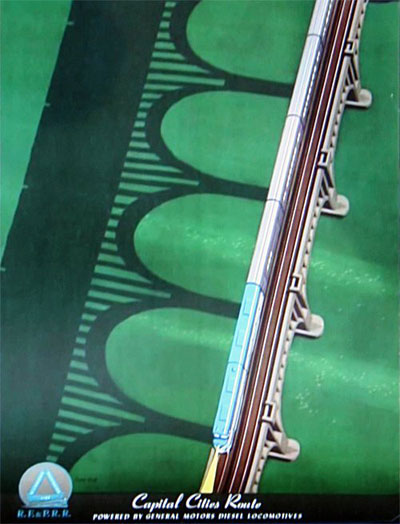
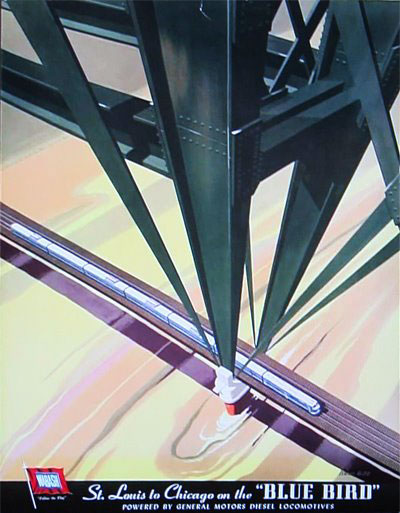
You’re reading Signal v. Noise, a publication about the web by Basecamp since 1999. Happy !
Some beautiful 1950s railroad posters from the cover of Railway Age Magazine. Illustrations by Bern Hill. You can check out the collection on Antiques Roadshow.


Fear: “I’m going to lose because someone else is going to beat me to market (or is already there).”
Truth: In business, there can be lots of winners in any niche. Look at how many shoe makers, Italian restaurants, and furniture manufacturers succeed. You can do well in a crowded field as long as you’re doing something that sets you apart from the pack. It can be price, style, substance, personality, positioning, or storytelling. There are tons of ways to establish your company as unique.
Don’t obsess over being first-to-market either. Successful businesses show up to the party late all the time. Google wasn’t the first search engine. VHS toppled Betamax even though it was later to market. There are plenty of things that are more important than being first.
Designs take a leap forward when you kill the things you didn’t know you were holding on to.
Haystack is off to a great start. We launched two weeks ago on October 21st, and so far over over 2,500 web designers have been listed. Lots are finding clients as well. That’s exciting.
We’ve been hard at work improving Haystack. Here are some of the improvements we’ve made since launch:
At the bottom of each company page, we’ve added a call to action after their portfolio shots. This way it’s easier to scroll through someone’s work and then get in touch with them. It says “Like what you see? Contact via email or web.” Here’s what it looks like:
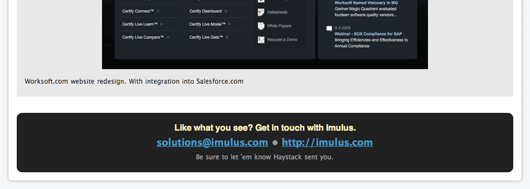
We wanted to call out new listings and listings that were recently updated. So for the first 48 hours, a listing card gets a “NEW” badge. Any listings with updated descriptions or new portfolio images get an “UPDATED” badge. Here’s what they look like close up and also in context.
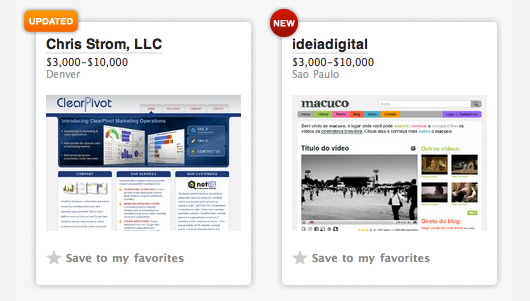
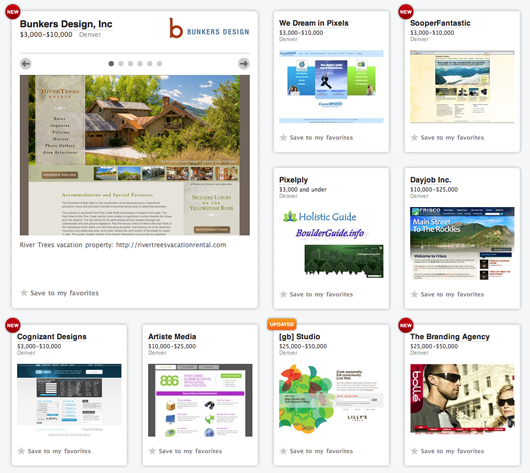
Car companies go to great lengths to hide new models from from the public (or car paparazzi) during road testing. They’ve gotta drive the cars, but they don’t want to give away their designs too early.
Car camouflage used to be handled with wraps, fake bodies, or fake pieces attached to the actual body. Like:


But lately I’ve noticed more companies using swirly decals or geometric stickers to mask the shape. Check these out:



I would assume once cars get deeper into the testing phase, and aerodynamics, wind noise, and overall ride quality need to be fined tuned, the bulky camp comes off and the swirly surface decals come on. But it does seem like the swirls are new in the last few years.
I wonder who’s behind them (since the same patterns are apparently used by different brands). Which company or inventor is the king of car camo?
(images from WorldCarFans).
Facebook sucks you in because everyone you know is using it. You go to eBay to find something because you know someone is selling what you want to buy. Oracle wins in the enterprise because there are tons of experts and plenty of auxiliary software available. All these business rely heavily on the network effect: Their product is more attractive than the competition because of their market share.
Do you know what kind of software doesn’t have the advantages of the network effect? Ours. One Highrise user doesn’t give a hoot whether we have 10,000 or 100,000 customers. Jane Doe doesn’t benefit if we sign up any other customers this year. As long as there’s a sound business behind the product, she doesn’t care about anyone else. In other words, there are no network effects.
Do you know what other kind of software isn’t affected by the network effect? Bug tracking. I don’t care who else is using Trac as long as it’s great software. It doesn’t benefit us to know that the Shopify guys are using it too (short of just sharing tips and tricks). Again, no network effects.
I don’t think Spolsky notices a difference. In Does Slow Growth Equal Slow Death, he’s freaking out that a competitor (Atlassian, it seems) is growing faster than Fog Bugz and decides he has to get into market-share mode or face extinction. That unless he puts the turbo on growth, he’s going to be WordPerfect.
Fear is ugly because it makes you irrational. Fear makes you jump to conclusions. Fear makes you reactionary. Spolsky’s reaction to the imaginary threat of extinction is all fear:
1) Build every feature any customer would ever want: Apparently, by having all the features anyone can ever imagine, Fog Bugz will “eliminate any possible reason that customers might buy our competitors’ junk”. That’s a faulty conclusion and a terrible idea. Software that tries to be everything to everyone generally sucks. It becomes bloated, hard to use, and in need of big up-front training. (Actually, that’s a pretty good definition of enterprise software right there).
2) Become a sales force-driven company: Hire a bunch of sales people and make them convince people to buy our software. This is even more enterprisey thinking. Side step the actual users, the developers, and go straight to management with steak and strippers. I’ve worked at sales force-driven software companies and they suck. The sales people will invariably promise more than you have and drive you even deeper into “build everything for everyone”.
Companies in non-network-effects businesses don’t become extinct because they only have 50% y/y growth. They become extinct because they fuck up a good thing and become their own worst enemy. They take a successful product and ruin it trying to reach for the moon. Joel, please don’t do that.
Harvest is looking for a UX Designer in New York, NY.
Scholastic (eScholastic) is looking for a Senior Web Producer in New York, NY.
HubSpot is looking for a Web Design and Usability Maven in Cambridge, MA.
Camelback Web Architects is looking for a Graphics Designer in Dallas, TX.
Fanbase, Inc. is looking for a User Experience Designer in San Francisco, CA.
TripIt is looking for a Visual Design Lead in San Francisco, CA.
Online Buddies, Inc. is looking for a Web Developers (Junior – Senior positions available) in Cambridge, MA.
GelaSkins Inc. is looking for a Senior PHP Developer in Toronto, Canada.
Threespot Media is looking for a Front-End Developer in Washington, DC.
MyFDB is looking for a Rails Developer in Los Angeles, CA.
Angry Lapdog Productions is looking for a Rails Programmer in Seattle, WA.
Sharkey Media is looking for a Rails programmer in Sydney, Australia.
View all Programmer Job listings